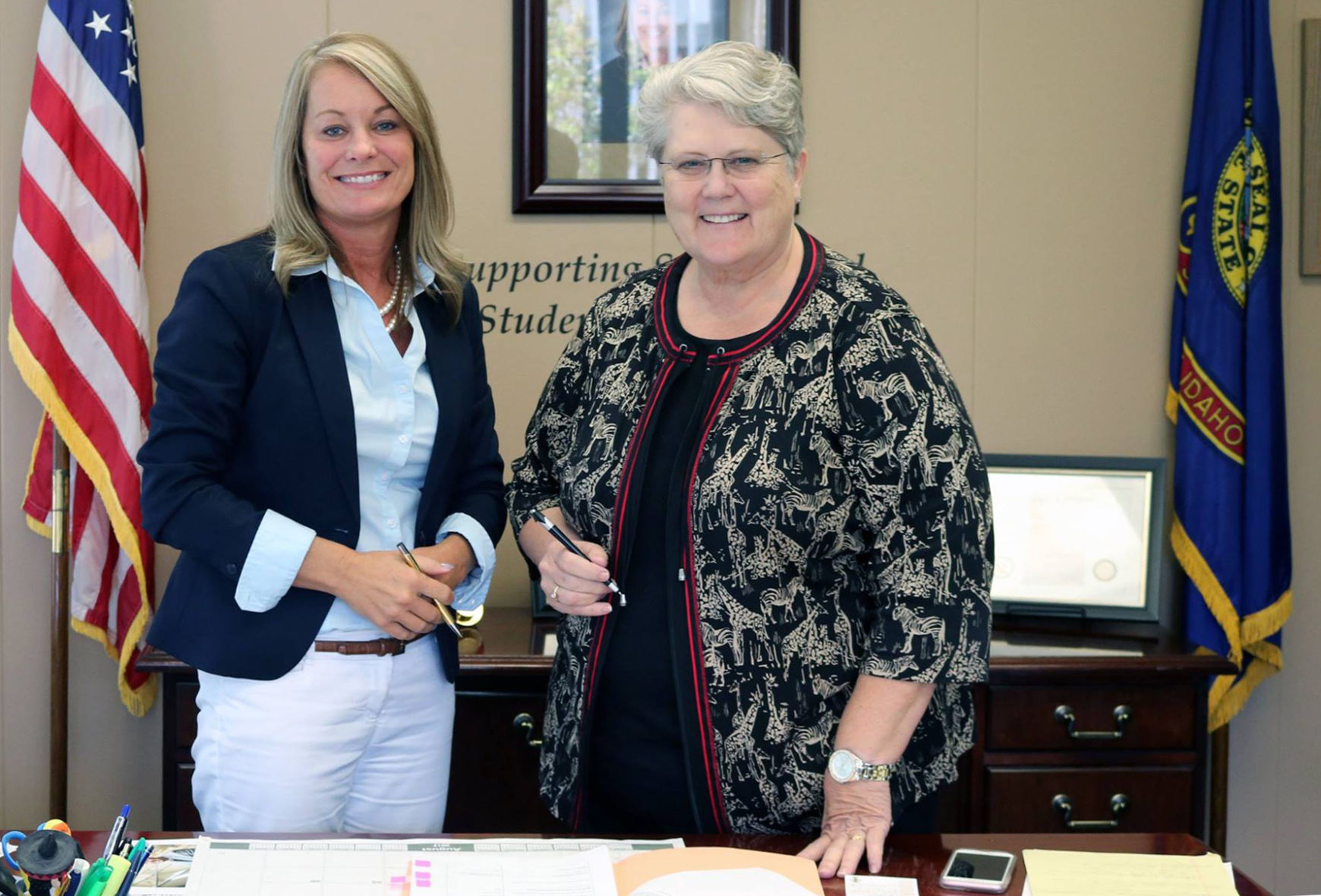Idaho has failed to meet 33 of 34 interim targets for long-term goals outlined in the state’s plan to comply with federal education law.
As part of Idaho’s plan to comply with the Every Student Succeeds Act, state officials outlined a series of performance and achievement goals they hope to meet by 2022. The goals called for increasing test scores and closing achievement gaps. Specifically, “Idaho’s long-term goal for English/language arts and mathematics will be to reduce the percentage of nonproficient students by 33 percent over six years.”
In order to stay on track, Idaho’s plan outlined a series of yearly interim targets that incrementally broke down the difference between the long-term goal and the baseline.
That’s where Idaho fell short.
Idaho Education News reviewed the ESSA plan and cross-referenced the interim targets with data the State Department of Education publishes through its new online report cards to shine a light on Idaho’s performance.
Idaho missed its interim targets in 33 of 34 areas. The state missed every one of its targets for improving the graduation rate and increasing achievement in math and English language arts. The only target Idaho met involved English language proficiency.
In some cases, Idaho was somewhat close. In math, for example, the state set a target of having 48.1 percent of students reach a score of proficient or advanced. In 2018, 43.69 percent of students reached that interim target.
In other cases, Idaho fell well short of the mark.
State officials set an interim target of having 24.6 percent of students with disabilities earn scores of proficient or advanced on their math assessment. In reality, just 13.81 percent of those students hit the mark in 2018.
Although state officials celebrated an increase in high school graduation rates last year, the figure everyone celebrated was short of the interim target from the ESSA plan. The state set a target of having 84.8 percent of students graduate high school. In reality, the graduation rate was 80.6 percent.
There is still time to recover by 2022, but Idaho is already behind schedule and now faces even more work if it hopes to realize its long-term goals.
Karlynn Laraway, the SDE’s director of assessment and accountability, said Friday she isn’t concerned about the widespread failure to meet interim targets.
“Is it a cause for concern? No, at this point we are staying the course and continue to support schools and districts in meeting local needs,” Laraway said.
It also doesn’t appear there are any consequences for failing to meet the interim goals. It isn’t clear, either, what would happen if Idaho falls short of its goals for 2022.
“There is no guidance from the U.S. Department of Education that plans have to be renewed or updated annually,” Laraway said.
Where did the targets and goals come from?

SDE officials developed the ESSA plan in 2016 and 2017. Superintendent of Public Instruction Sherri Ybarra, State Board of Education then-President Linda Clark and former Gov. Butch Otter all signed off on it in 2017. Then, the State Board unanimously approved the plan before submitting it to the U.S. Department of Education, which approved it in March 2018.
During public ESSA hearings in 2017, several education groups and advocates weighed in on the long-term goals.
Several of them, including Rep. Ryan Kerby, a New Plymouth Republican who now serves as vice chairman of the House Education Committee, voiced concerns about setting unrealistic goals.
“To me, we haven’t talked about the main issue here: How are we going to reach those goals?” Kerby asked on June 26, 2017. “I haven’t heard any kind of plan on how to reach them.”
Several prominent education advocates — including leaders of the Idaho Education Association and the Idaho School Boards Association and Senate Education Committee Chairman Dean Mortimer, R-Idaho Falls — all complained that they had been kept in the dark about the ESSA compliance plans.
Marilyn Whitney, the SDE’s deputy for communications and policy, said the problem is not with the goals. She said officials and stakeholders tried to strike the right balance when developing the goals and targets.
“There was a discussion about where to set those targets,” Whitney said Friday. “We want them to be realistic. We want to set targets that are achievable. At the same time, we want to have high expectations.”
Laraway agreed. “The requirement was they had to be ambitious and had to close achievement gaps in subgroups or underperforming (students),” she said.
A closer look at the data: Click on the highlighted text of the 2018 ESSA Goal Summary to view Idaho Education News’ spreadsheet tracking Idaho’s performance vs. the ESSA interim targets.
Further reading: Idaho’s ESSA compliance plan, with pending amendments, is available on the State Department of Education’s website.
Idaho Education News data analyst Randy Schrader contributed research to this report.
